NETWORK THEOREMS
Superposition Theorem: Two Loop ProblemTo apply the superposition theorem to calculate the current through resistor R1 in the two loop circuit shown, the individual current supplied by each battery is calculated with the other battery replaced by a short circuit. Note: To avoid dealing with so many short circuits, any resistor with value zero will default to 1 when a voltage is changed. It can be changed back to a zero value if you wish to explore the effects of short circuits. Ohms and amperes are the default units, but if you put in resistor values in kilohms, then the currents will be milliamperes.
| Index DC Circuits | ||
| Go Back |
Superposition Theorem
| Index DC Circuits | ||
| Go Back |
Thevenin's TheoremAny combination of batteries and resistances with two terminals can be replaced by a single voltage source e and a single series resistor r. The value of e is the open circuit voltage at the terminals, and the value of r is e divided by the current with the terminals short circuited.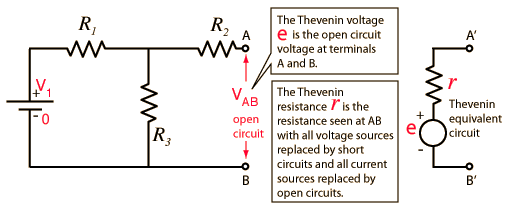
| Index DC Circuits | ||||||
| Go Back |
Thevenin VoltageThe Thevenin voltage e used in Thevenin's Theorem is an ideal voltage source equal to the open circuit voltage at the terminals. In the example below, the resistance R2 does not affect this voltage and the resistances R1 and R3 form a voltage divider, giving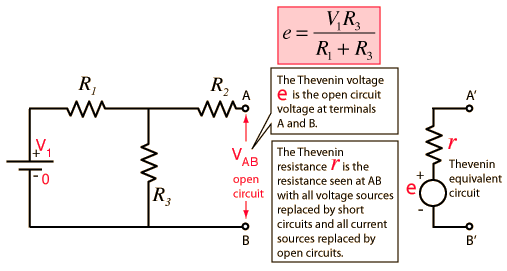
| Index DC Circuits | |||
| Go Back |
Thevenin/Norton ResistanceThe Thevenin resistance r used in Thevenin's Theorem is the resistance measured at terminals AB with all voltage sources replaced by short circuits and all current sources replaced by open circuits. It can also be calculated by dividing the open circuit voltage by the short circuit current at AB, but the previous method is usually preferable and gives 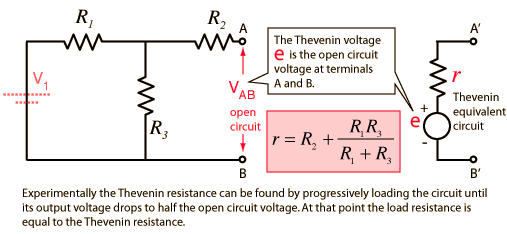
| Index DC Circuits | |||
| Go Back |
Thevenin ExampleReplacing a network by its Thevenin equivalent can simplify the analysis of a complex circuit. In this example, the Thevenin voltage is just the output of the voltage divider formed by R1 and R3. The Thevenin resistance is the resistance looking back from AB with V1 replaced by a short circuit.
| Index DC Circuits | |||
| Go Back |
Norton's TheoremAny collection of batteries and resistances with two terminals is electrically equivalent to an ideal current source i in parallel with a single resistor r. The value of r is the same as that in the Thevenin equivalent and the current i can be found by dividing the open circuit voltage by r.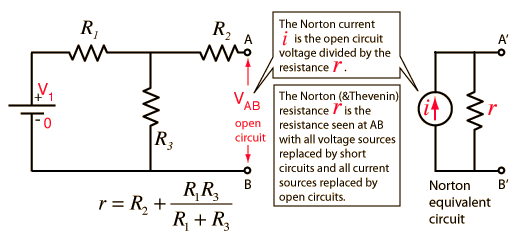
| Index DC Circuits | ||||
| Go Back |
Norton CurrentThe value i for the current used in Norton's Theorem is found by determining the open circuit voltage at the terminals AB and dividing it by the Norton resistance r.
| Index DC Circuits | |||
| Go Back |
Norton ExampleReplacing a network by its Norton equivalent can simplify the analysis of a complex circuit. In this example, the Norton current is obtained from the open circuit voltage (the Thevenin voltage) divided by the resistance r. This resistance is the same as the Thevenin resistance, the resistance looking back from AB with V1 replaced by a short circuit.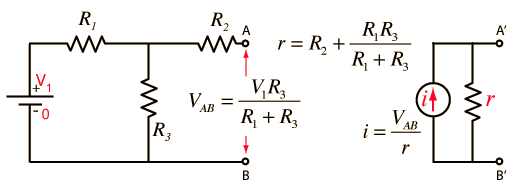
| Index DC Circuits | ||
| Go Back |





Post a Comment: